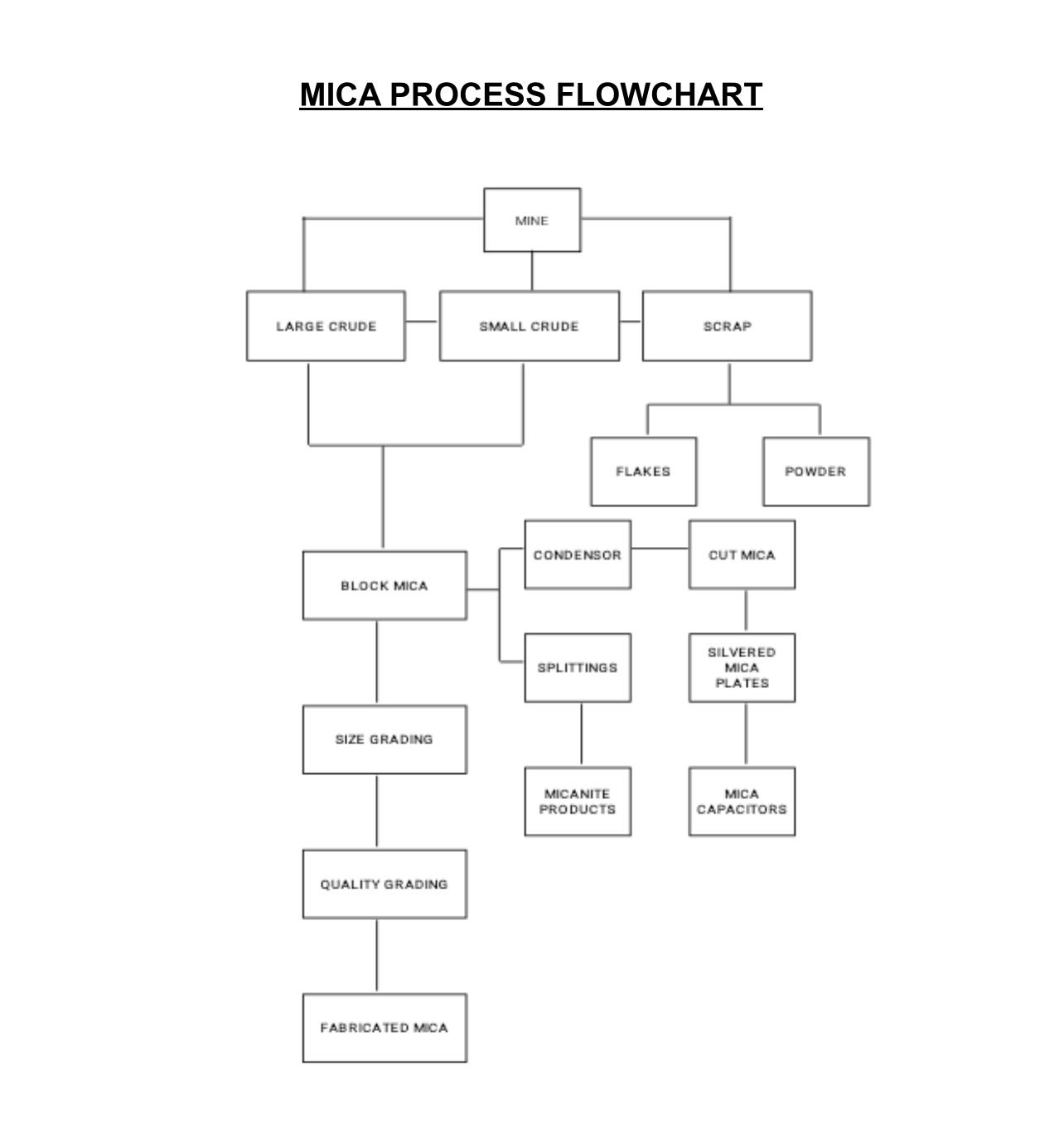Mica is a naturally occurring mineral, based on a group of silicate minerals composed of varying amounts of aluminum, potassium, magnesium, iron and water having thin sheet-like or plate-like structure with different composition and physical properties.
All Mica form flat six-sided monoclinic crystals with a remarkable cleavage in the direction of large surfaces, which permits them to be easily cleaved into optically flat films. When cleaved into thin films, they remain tough and elastic even at high temperatures.
Mica possesses some of the most outstanding combinations of chemical, physical, electrical, thermal and mechanical properties which cannot found in any other insulating product.
Mica is a biaxial birefringent crystal. Its average refractive index in the visible spectrum is about 1.6. Because of its birefringence, it can be used to cause a phase delay between two orthogonal components of an input linear polarization and thus can be used as a retardation device.
| Specific gravity | 2.82 |
| Index of refraction | 1.58 |
| Hardness (Moh’s scale) | 2.5 |
| pH value (BS 3483) | 7.7 |
| pH for distilled water | 5.2 |
| Oil absorbtion | 60-90 g/oil |
| (BS 3483) | 100g Mica |
| Water Soluble | Not more |
| (BS 1765) | than 0.5% |
| Effect by common acids | Slight |
| Phericity Factor | 0.01 |
| Softening point | 2800°F |
| Silica (SiO2 ) | 45.70% |
| Alumina (Al2 O3 ) | 33.10 |
| Potassium Oxide (k2O) | 09.87% |
| Ferric Oxide (Fe2O3) | 02.48% |
| Sodium Oxide (Na2O) | 00.62% |
| Titanium Oxide (TiO2) | Trace |
| Calcium Oxide (CaO) | 00.21% |
| Magnesia (MgO) | 00.38% |
| Moisture @ 100 °C | 00.25% |
| Phosphorous (P) | 00.03% |
| Sulphur (S) | 00.01% |
| Graphitic Carbon (C) | 00.44% |
| Loss on ignition (H2O) | 02.74% |
| Properties | Units | Muscovite | Phlogopite |
|---|---|---|---|
| Color | Ruby/ Green/ White | Amber/ Silver/Green | |
| Density | gm/cm3 | 2.6 – 3.2 | 2.6 – 3.2 |
| Specific heat | 0.21 | 0.20 | |
| Hardness | Moh scale | 2.8 – 3.2 | 2.3 – 3.0 |
| Shore Test | 80-105 | 70-100 | |
| Breakdown voltage | KV/mm | 120 – 200 | – |
| Coefficient of expansion per °C perpendicular to cleavage plane | 9 x 10-6 – 36 x 10-6 | 30 x 10-6 – 60 x 10-6 | |
| Thermal conductivity perpendicular to cleavage plane | Gm.cal/sec/cm2/°C/cm | about 0.0013 | about 0.0010 |
| BTU/hr/ft2/0f/ft | about 0.31 | about 0.24 | |
| Thermal conductivity parallel to cleavage plane | Gm.cal/sec/cm2/°C/cm | about 0.012 | |
| BTU/hr/ft2/0f/ft | about 3.0 | ||
| Water of Constitution % | 4.5 | 3.0 | |
| Moisture Absorption | Very low | Very low | |
| Volume Resistivity | 25°C (77°F) ohm cm | 40 x 1013 -2 x 1017 | 1 x 1012 -1 x 1012 |
| Acid Reaction | affected by hydrofluoric acid | affected by sulphuric acid | |
| Insulation resistence | x1013ohm/cm | 4-20000 | 0.1 – 10 |
| Calcining temp | °C | 700-800 | 900-1000 |
| Max. operating temp | °C | 500-600 | 800-1000 |
| Optic axial angle | degrees | 55 – 75 | 5 -25 |
| Tensile strength | MN/m2 | 175 | 1000 |
| Shear strength | MN/m2 | 220 – 270 | 1000-1300 |
| Compression strength | MN/m2 | 190 – 285 | – |
| Modulus of Elasticity | Kgfcm2 x 10-3 lbf/in2 x 10-6 |
1400 – 2100 20 – 30 |
1400 – 2100 20 – 30 |
| Loss tangent | x10-4 | 1-4 | 10-50 |
| Permittivity at 15°C (60°F) | 6 – 7 | 5 -6 |

All Rights Reserved @ USA MICA LLC